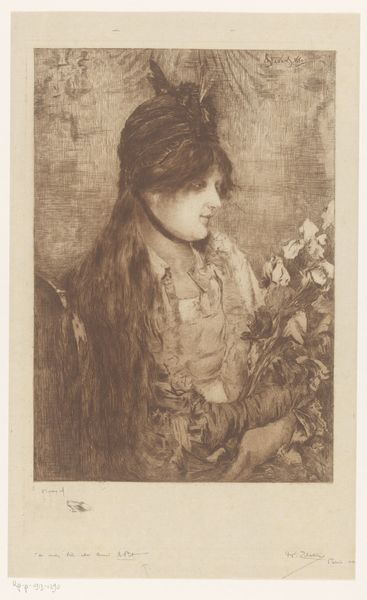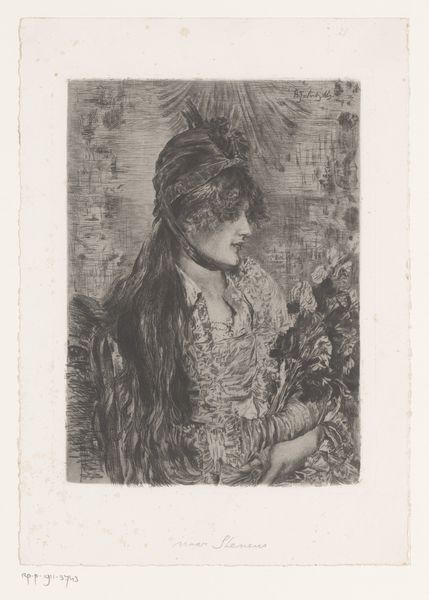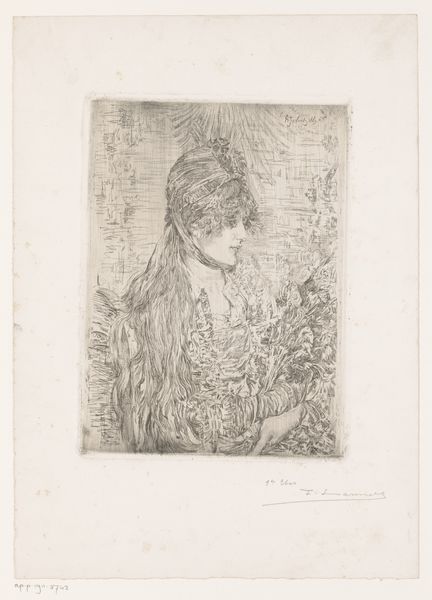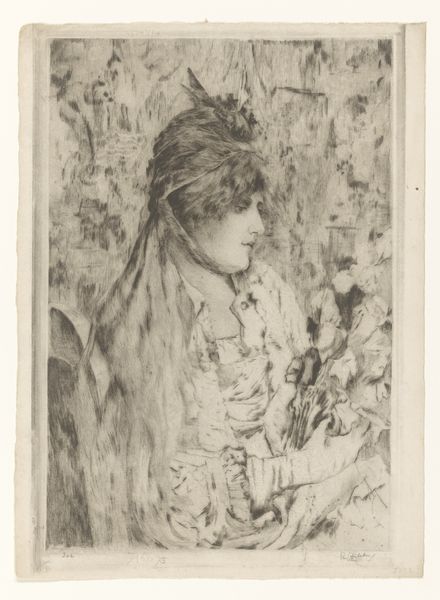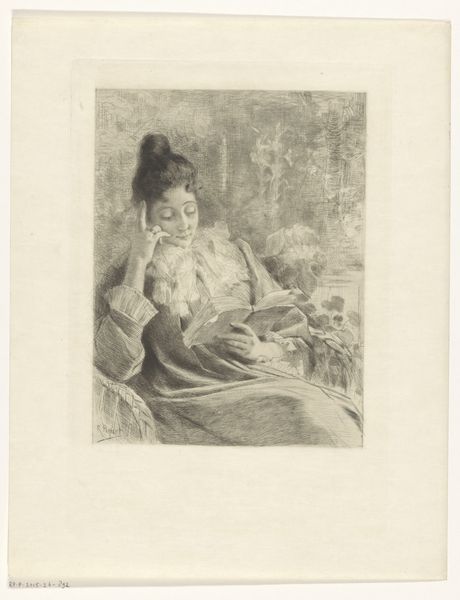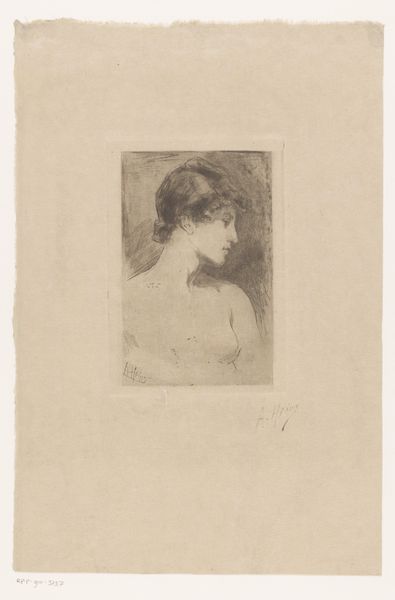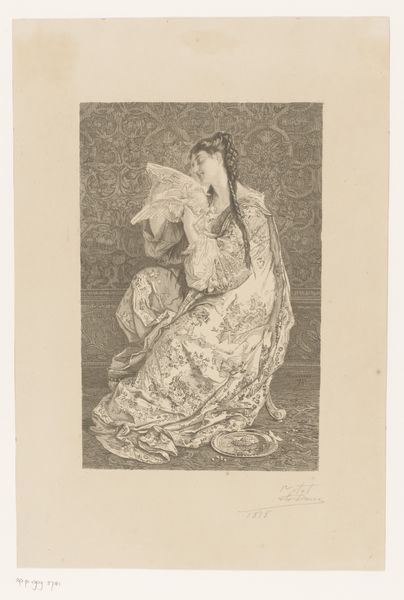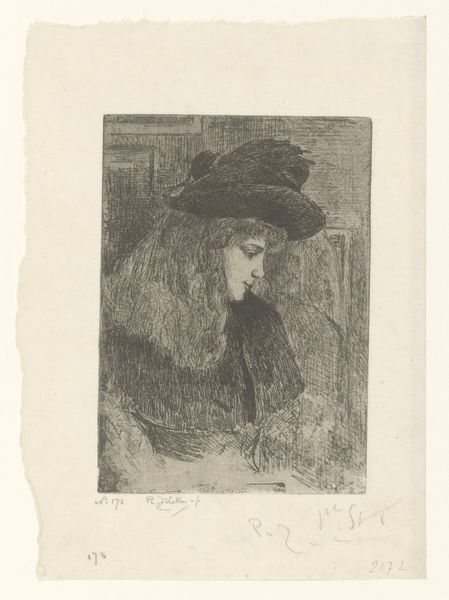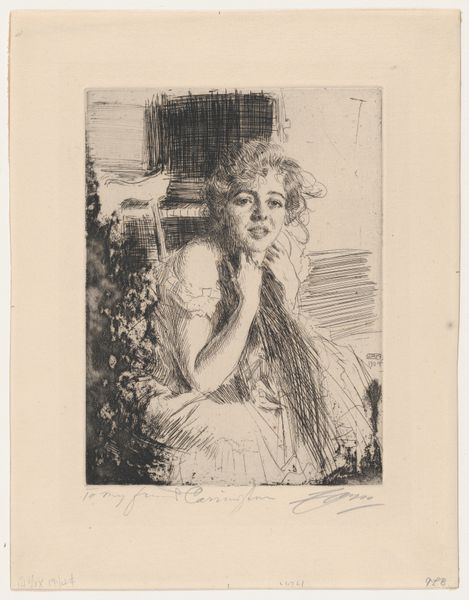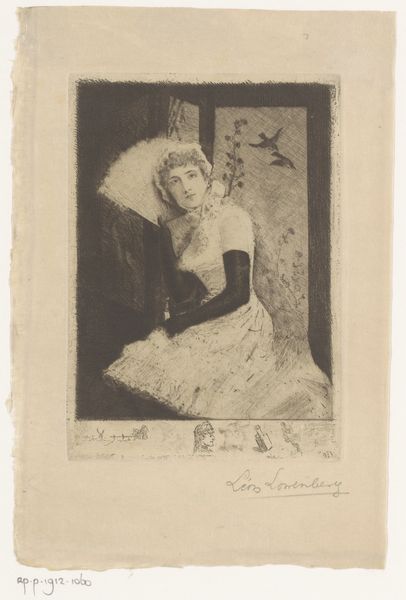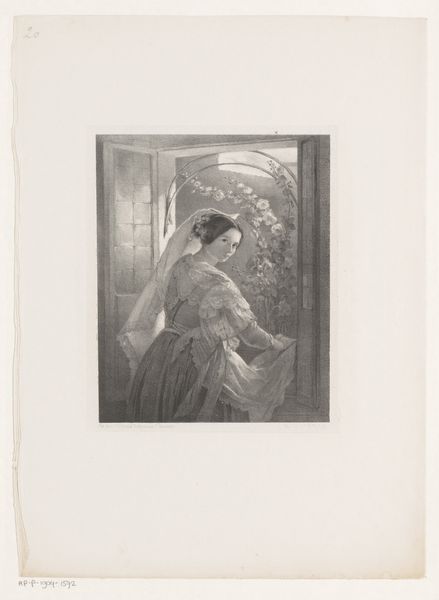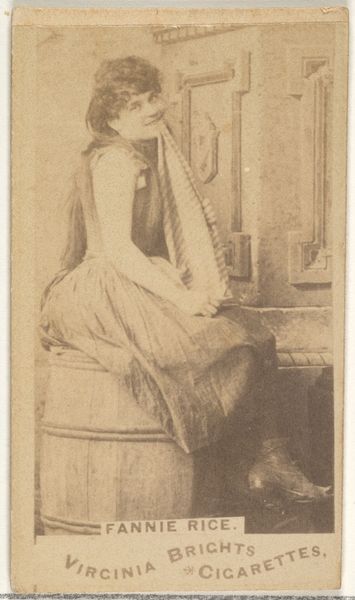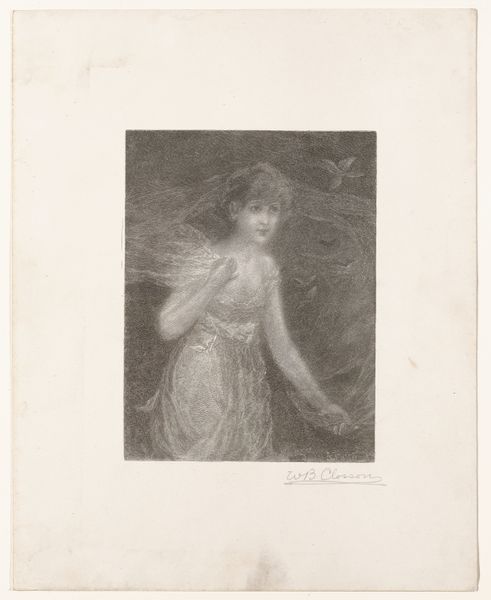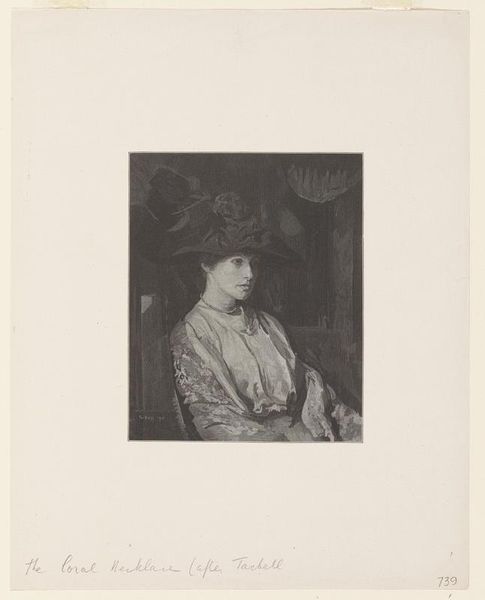
print, etching
#
portrait
# print
#
etching
#
intimism
#
genre-painting
#
realism
Dimensions: height 450 mm, width 321 mm
Copyright: Rijks Museum: Open Domain
Curator: Here we have Philip Zilcken's "Vrouw met boeket bloemen," which translates to "Woman with a Bouquet of Flowers." Dating sometime between 1863 and 1890, this is an etching, currently held at the Rijksmuseum. Editor: It strikes me as rather melancholic. There's a certain stillness to the woman’s gaze, and the muted tones amplify that feeling. It’s very intimate, though—inviting even. Curator: Absolutely, I see echoes of a very specific type of portraiture meant for private devotion, where beauty is a vessel of the inner self. The bouquet, almost shielding her face, also functions as an emblem, doesn't it? Floral language was popular during the Victorian era. Each flower held symbolic weight, informing viewers about her unspoken desires or virtues. Editor: Interesting, that subtext. To me, the etching technique emphasizes the woman's social standing; the haziness could represent an intentional barrier of entry, creating an artistic divide. Curator: In those days, the detailed layering characteristic of etching, especially in a work such as this one that strives to represent 'real life,' signaled both an attention to naturalism and also artistry, which were valued hallmarks of culture. Editor: Yet, could the focus on this refined sensibility perhaps mask a deeper societal critique? Are we romanticizing constraints placed upon women of the time? The floral language feels, well, forced. Curator: Perhaps. But in this subtle dance of presentation and hidden language, doesn’t that make the act of looking—of trying to truly *see* her—more powerful? If it weren't, why hide behind them? Editor: So, while our conversation unfolds, her layered visage remains elusive—but open to those attuned to nuances in gender politics in visual media? I like the resonance of this paradox, particularly today. Curator: And I appreciate considering how this woman's likeness, etched so deliberately in ink, now becomes this palimpsest where our changing understandings of gender roles can be drawn again and again.
Comments
No comments
Be the first to comment and join the conversation on the ultimate creative platform.
